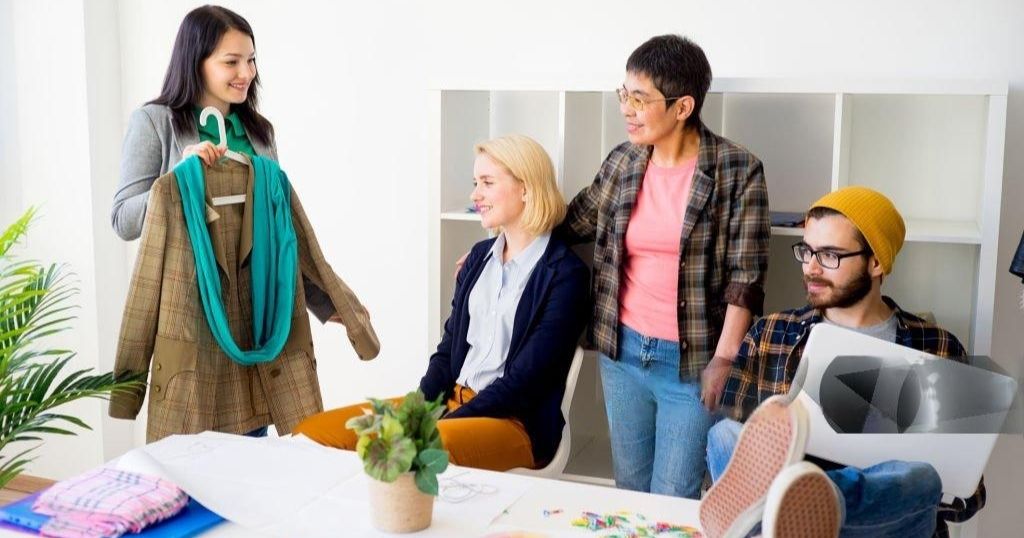Fashion Abbreviations make communication easier in the fashion world. They help everyone understand one another better.
The fashion industry uses many confusing terms. This can lead to misunderstandings between designers and shoppers.
This blog post will explain popular fashion abbreviations and show how they help experts and everyday people connect in fashion.
What Are Fashion Abbreviations
Fashion abbreviations are short forms of words or phrases used in the industry. They are different from acronyms, which use the first letters of each word. For example, “CAD” means “Computer-Aided Design,” a tool for creating clothing designs. Another example is “SKU,” which stands for “Stock Keeping Unit,” which is used to track products.
Abbreviations are important because they make communication quicker and easier. They help designers, manufacturers, and retailers talk about ideas without getting confused. Using these short forms helps everyone understand each other better and work more smoothly.
Historical Background
Fashion terms have changed a lot over time. After World War II, in the late 1940s and early 1950s, styles shifted from practical to more elegant designs. For example, Christian Dior’s “New Look,” introduced in 1947, featured fuller skirts and emphasized femininity. As society evolved, the language of fashion adapted to reflect new trends and cultural changes.

Technology has also influenced fashion language. Tools like Computer-Aided Design (CAD) have introduced new terms. CAD helps designers create digital drawings quickly, improving their work efficiency. A study by Fibre2Fashion found that using CAD can speed up design processes by about 30%. This change not only affects how clothes are made but also how people communicate about fashion in the industry.
The Role of Social Media in Promoting Fashion Abbreviations
Social media has made it easy to share fashion abbreviations. Hashtags like #OOTD (Outfit of the Day) and #FW (Fashion Week) help people show their styles and follow trends. These short forms make it simple for users to connect over fashion.
Many social media platforms have limits on how many characters you can use. This encourages people to use abbreviations to save space. Short terms help users share ideas quickly and find information easily.
Social media greatly influences fashion trends. A study by McKinsey found that 70% of people look at social media for style ideas. Also, 63% of users find new brands through these platforms. This shows how important social media is in shaping what people wear and how they discuss fashion.
Abbreviations as a Way to Talk About Fashion
Abbreviations in fashion, like “RTW” (Ready to Wear) and “FW” (Fashion Week), help people talk easily about clothes and trends. These short forms make it simple for designers and fans to communicate. Knowing these terms makes someone feel part of the fashion world.
These abbreviations are like slang used in groups such as punk or hip-hop. Just like those groups have their own special words, fashion has its language too. This helps people feel connected to others who share their interests.
When someone understands fashion abbreviations, they can join conversations more easily. This makes them feel confident and included in the fashion world.
Challenges and Criticisms of Fashion Abbreviations
Fashion abbreviations can confuse older people or those not very interested in fashion. Terms like “OOTD” (Outfit of the Day) or “FW” (Fashion Week) may make some feel left out if they don’t know what they mean.
Abbreviations can also oversimplify fashion. Using short forms might make it seem like fashion is just about quick trends, ignoring the creativity behind each piece.
Brands can balance this by using fewer abbreviations and adding explanations, like “RTW (Ready to Wear).” This helps everyone understand while keeping things trendy.
The Global Reach of Fashion Abbreviations
Fashion abbreviations are used worldwide, helping people talk about style in any language. Terms like “OOTD” (Outfit of the Day) are popular in many countries, making it easier for brands to connect with customers.
In South Korea, for example, people often use English terms like “OOTD” in K-fashion. This mix helps everyone understand and enjoy global fashion trends.
Research shows that brands that adapt to local markets, like H&M and Zara, see better sales. They use familiar fashion terms while fitting local styles, proving that fashion abbreviations are key to success around the world.
The Future of Fashion Abbreviations
Fashion abbreviations are likely to keep growing because they make communication simple. They help brands talk to customers quickly, which is important for selling clothes. As technology changes, we can expect new abbreviations to show up, especially with more online shopping and social media.
With tools like artificial intelligence (AI), brands can create shopping experiences just for you. AI helps understand what people like and can suggest products based on your preferences. This makes abbreviations more useful.
In the future, we may see new abbreviations that fit current trends. As brands use AI for marketing, they will find better ways to connect with customers, making abbreviations a key part of fashion.
Conclusion
Designers are using short forms, or abbreviations, in fashion to make talking easier. Words like “RTW” (ready-to-wear) and “FW” (fall/winter) help people quickly share ideas about clothes and styles. This makes conversations faster and clearer for everyone involved.
In summary, using fashion abbreviations shows a move towards simpler and clearer communication. These short forms help people work together better and understand each other easily. This way, designers can spend more time being creative instead of explaining things in long sentences.
FAQs
What is the most popular fashion abbreviation today?
The most popular fashion abbreviation today is OOTD, which means Outfit of the Day. It is used on social media to show daily outfits.
Are fashion abbreviations only for younger generations?
No, fashion abbreviations are not just for younger people. People of all ages use them to talk about clothes and styles.
How do fashion abbreviations affect online shopping?
Fashion abbreviations make online shopping easier and faster. They help shoppers quickly understand sizes and styles.
Can abbreviations make fashion more sustainable?
Yes, abbreviations can help make fashion more sustainable. They let brands share important information quickly, helping shoppers choose eco-friendly options.
What are the downsides of using fashion abbreviations?
Using fashion abbreviations can cause confusion for some people. Not everyone knows what they mean, which can make communication difficult.







